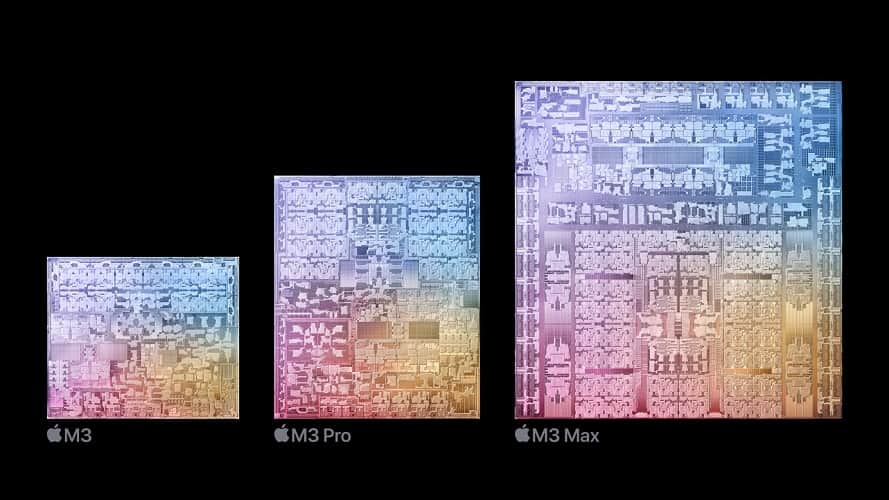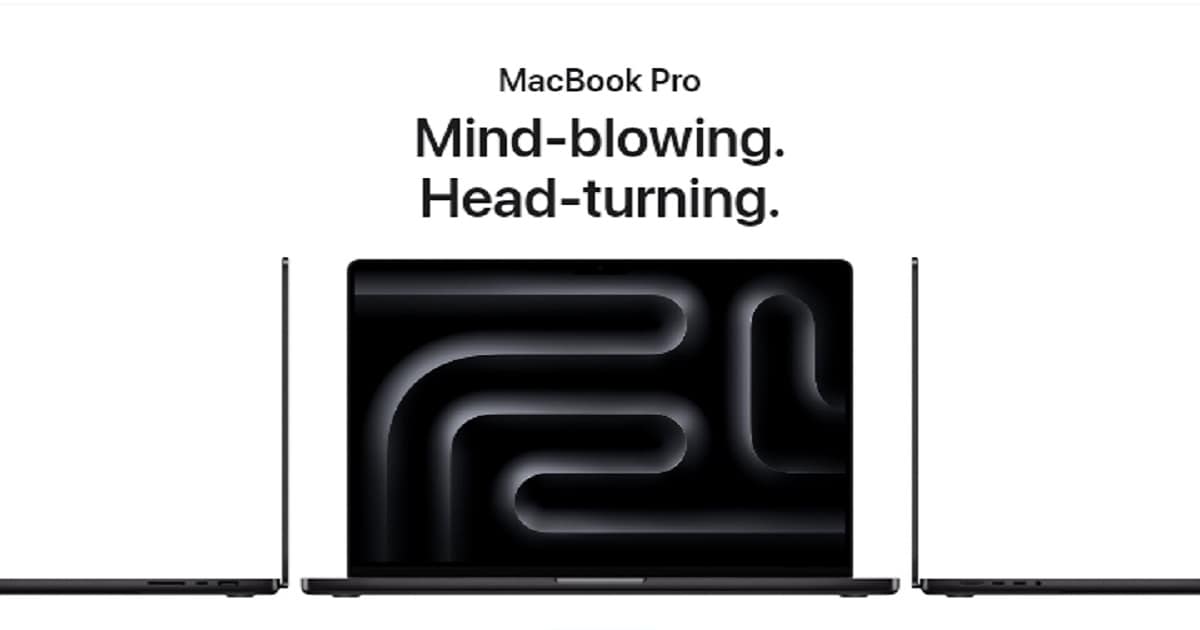Apple’s October 30 Scary Fast event was undeniably a thrilling experience. It brought us the exciting revelation of new MacBook Pros and a stunning 24-inch iMac. We also got a fresh spectrum of color options for the MacBook Pro lineup. However, the true gem of the event was the introduction of a new member to the silicon chipset family, the M3.Now, I find myself embroiled in a contemplative debate – should I upgrade to M3 MacBook Pro?
I know a lot of you are thinking about this too. So, come along on this introspective voyage as I weave together the case for and against the M3 MacBook Pro.
What’s New With the M3 Macbook Pro?
The most substantial transformation in the new MacBook Pro lineup comes from the M3 chip, acclaimed as “the most advanced chip ever built for a personal computer” by Apple. During the Scary Fast Event, Apple illuminated us on the chip’s remarkable features and benchmarks from their in-house testing. Let’s briefly delve into the technical aspects of this remarkable chipset.
Faster, More Efficient CPU
The M3 chip stands as the world’s pioneer in adopting a cutting-edge 3nm manufacturing process. This technological advancement allows the M3 chip to house a significantly larger number of transistors within the same physical space compared to its predecessors, the M1 and M2 chips, which were built on a 5nm node.
To put it into perspective, the M3 boasts an impressive 5 billion more transistors than the M2, and an astonishing 9 billion more than the M1. This leap in transistor density translates to enhanced efficiency and overall performance. Apple’s data indicates that the M3 is expected to deliver a remarkable 35% boost in performance compared to the M1.

New & Improved GPU Architecture
The M3 chip unveils a groundbreaking GPU architecture. John Ternus, Senior Vice President of Hardware Technologies at Apple, eloquently elaborated on this architecture’s ability to dynamically allocate local memory in real-time, aptly named “Dynamic Caching.”
This innovative feature is poised to enhance performance by guaranteeing that apps can access the necessary memory for seamless operation. Apple’s internal testing yielded impressive results, showcasing a remarkable 65% performance boost over the M2 chip.
Better Neural Engine
The neural engine on the M3 chip has undergone significant enhancements to deliver a substantial boost in AI workload performance. According to Apple’s benchmarks, the new neural engine achieved an impressive 60% improvement over its predecessor, the M2.
New Hardware Features for Gaming
With M3, Apple introduced support for hardware-accelerated ray tracing and mesh shading, two cutting-edge features that are gaining traction in the gaming world. As a result, the M3 chip promises significantly enhanced gaming performance compared to its predecessors, the M1 and M2.
Power Management
Perhaps the most remarkable aspect of the statistics we’ve discussed lies in the astounding power efficiency of the M3 chip. According to Apple, the M3 MacBook Pro boasts a staggering battery life of up to twenty-two hours on a single charge.
How It All Translates To Everyday Usage
In real-life scenarios, the M3 MacBook Pro proves to be exceptional for a wide range of everyday uses. Whether you’re diving into gaming sessions, writing and compiling code in Xcode, or crafting stunning graphics, the M3 MacBook Pro consistently delivers impressive performance.
Moreover, the display on the new MacBooks leaves no room for disappointment. With the ability to crank up the brightness on HDR content to a remarkable 1000 nits and a maximum of 1600 nits, it promises to be an incredibly versatile and visually captivating canvas. Even SDR content receives a notable 20% brightness boost, reaching up to 600 nits.
While the M3 shares some similarities with its predecessors, it’s worth exploring the commonalities in more detail.
The Not-So-Different Bits
Surprisingly (and slightly disappointingly), the M3 MacBook Pro will ship with the same number of cores on the CPU (eight cores) and GPU (eight or ten cores) as the M2 offering. The base model will also come equipped with just 8GB of unified memory and 512GB of storage.
Now, this isn’t necessarily a step down, given the notable performance boost that accompanies the newer chip. I simply had higher expectations. Besides, shipping the base models with these specs made the relatively cheap starting price of $1,599 possible. So, it’s a trade off I can get behind.
The other stuff don’t seem to have changed on the new MacBook Pros. The speakers and design have stayed consistent, with the notable exception of the touchbar’s demise. Additionally, the introduction of space black variants in the M3 Pro and M3 Max models adds a sleek touch up to the lineup.
Our Take
So, should you upgrade to the M3 MacBook Pro just yet? It depends. The answer boils down to your specific circumstances, particularly your budget and performance expectations.
If you consistently push your current M1 or M2 MacBook Pro to its limits in terms of GPU and CPU usage, then upgrading to the M3 Pro or M3 Max models should be a strong consideration. On the other hand, if your usage is less demanding but you still want your laptop to deliver impressive performance, then upgrading to the base M3 MacBook Pro makes sense.
Finally, if you’re a light user and currently own an M1 or M2 MacBook Pro, upgrading may not be necessary.
As for my decision, I’ve decided to upgrade my 14-inch M1 MacBook Pro to the base M3 model. I held off on the M2 upgrade because I had a feeling something better was on the horizon. Now that it’s here, there’s no need to delay any further. If you’ll be upgrading too, pre-orders are on now. Learn how to pre-order in this guide.
Will you be upgrading? Let me know your thoughts in the comments section.
